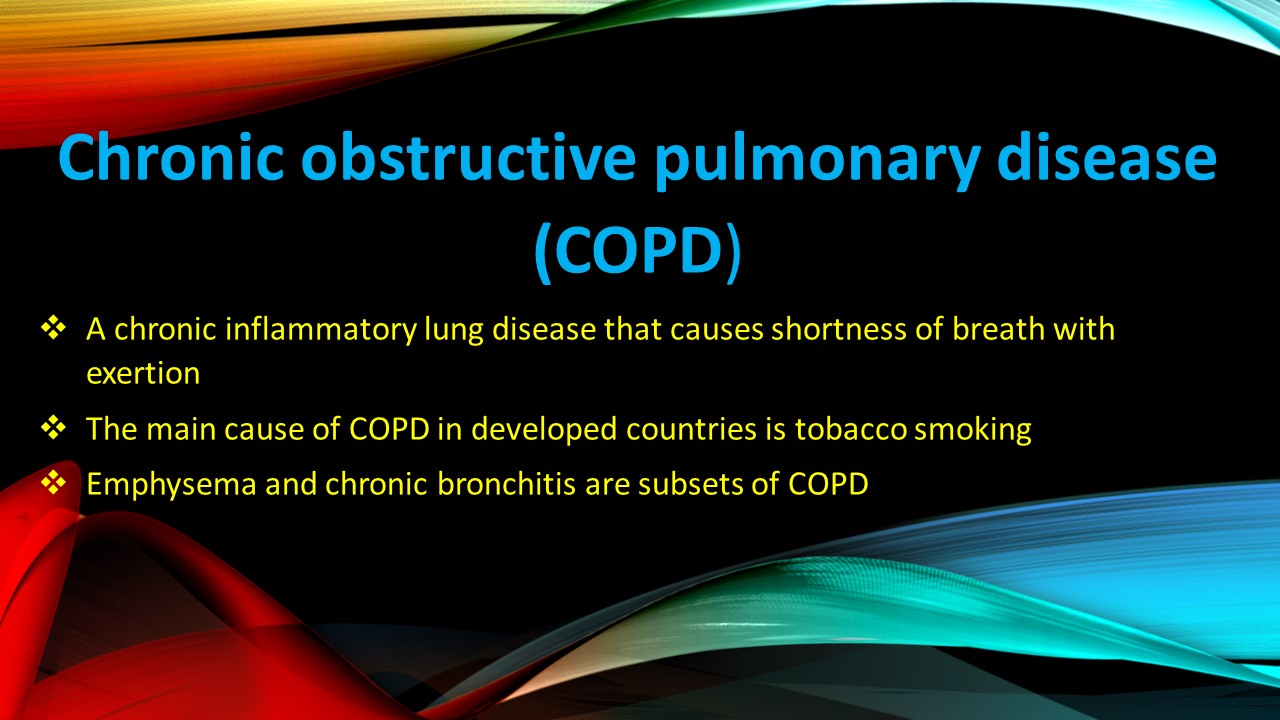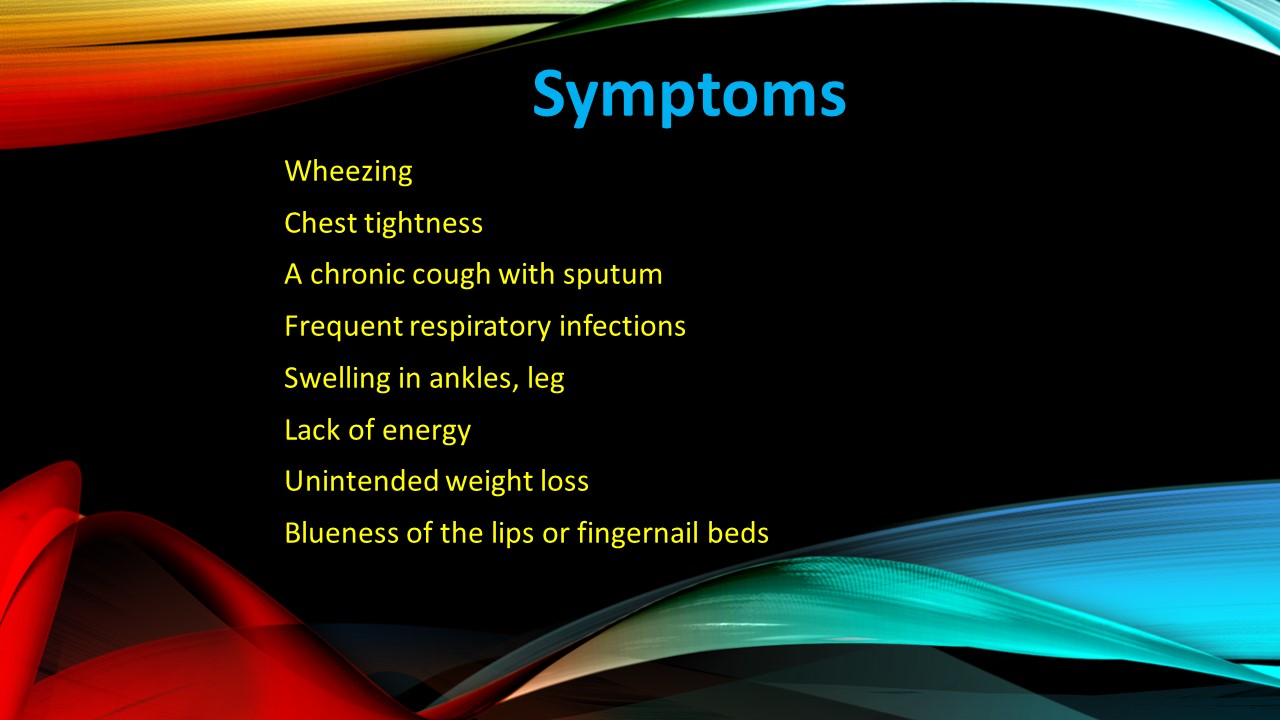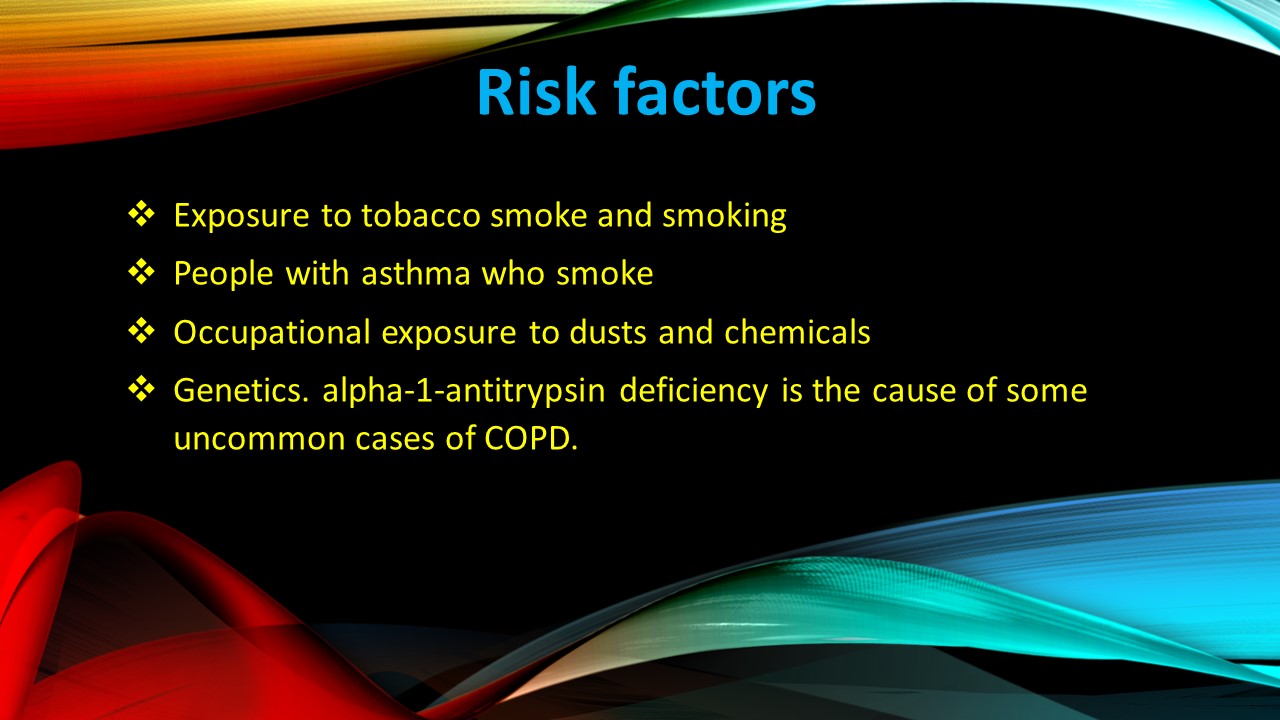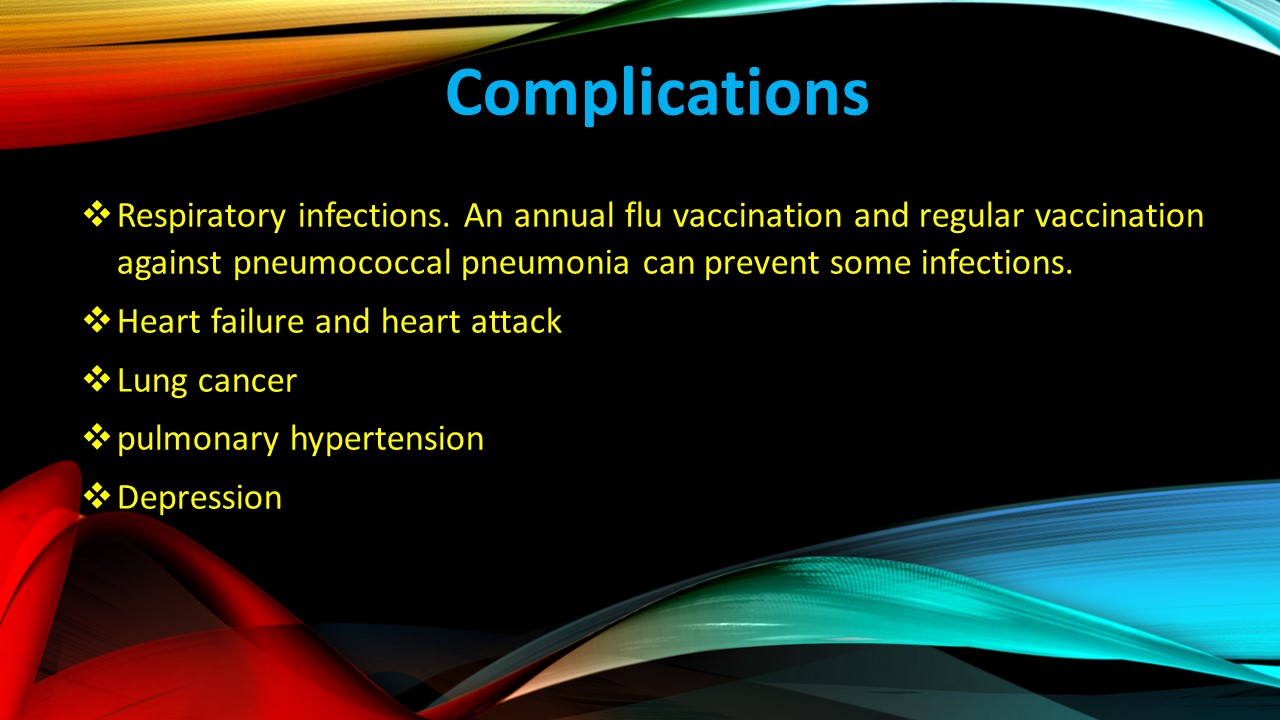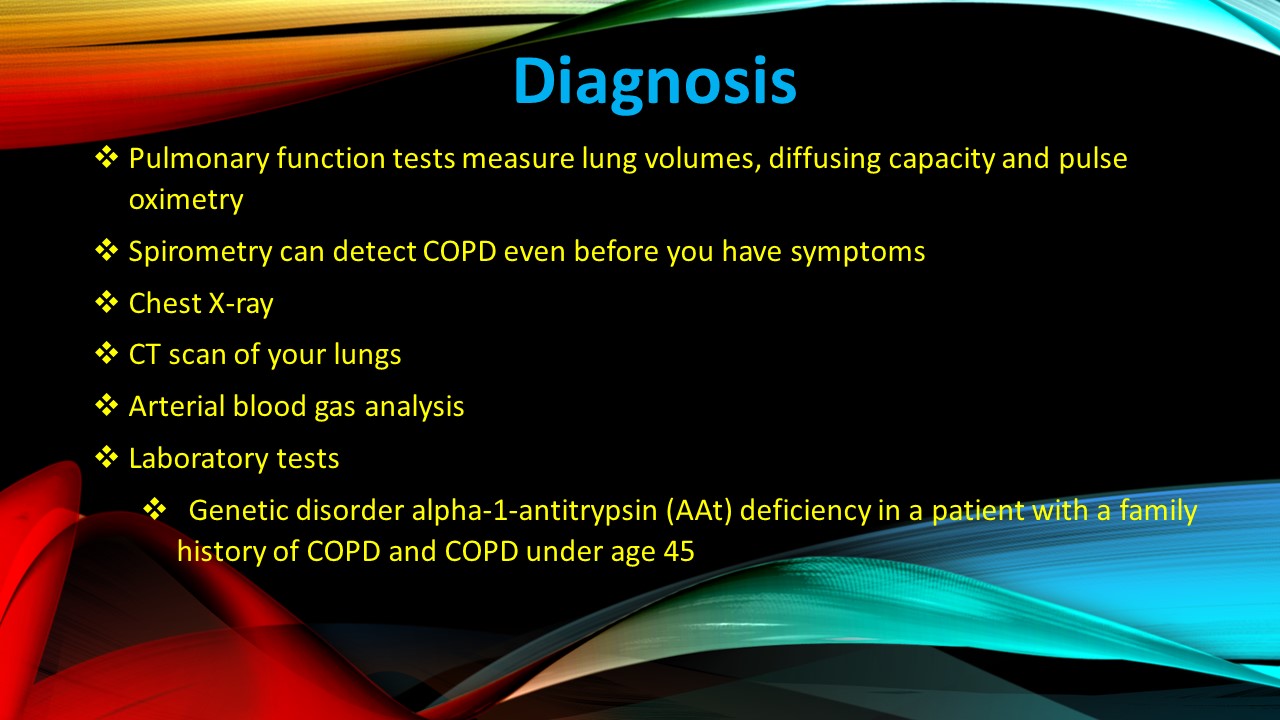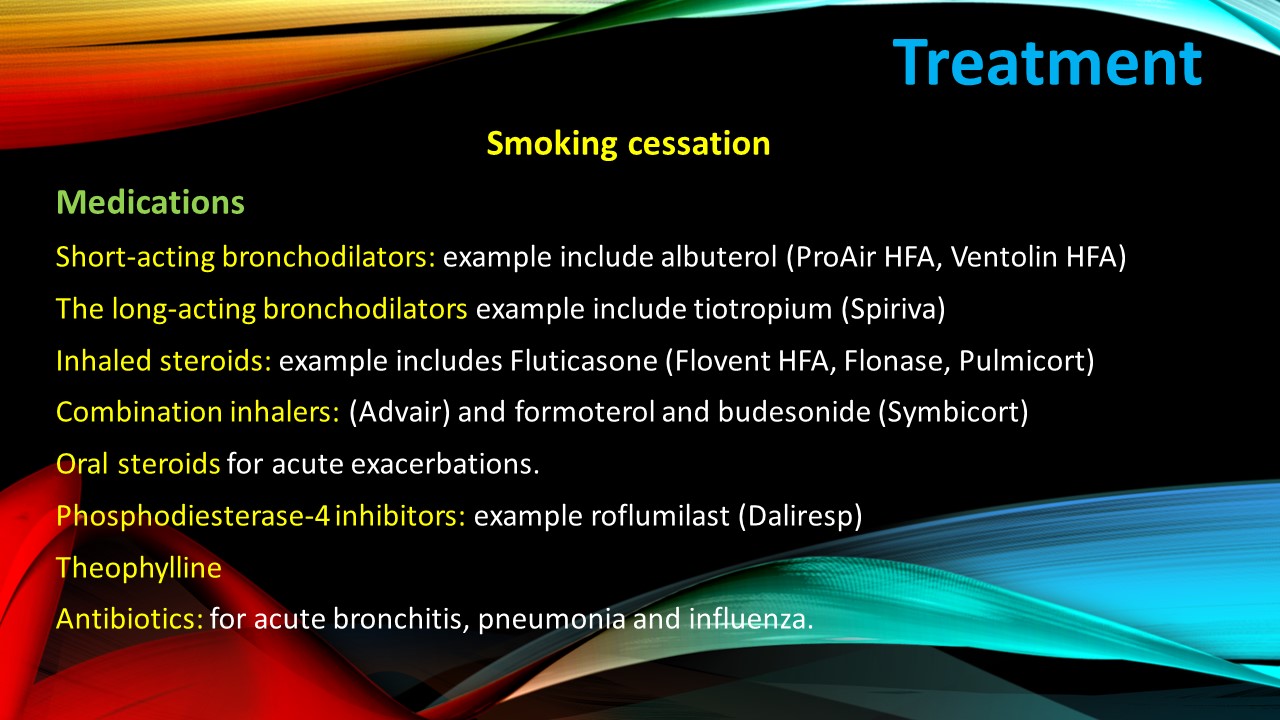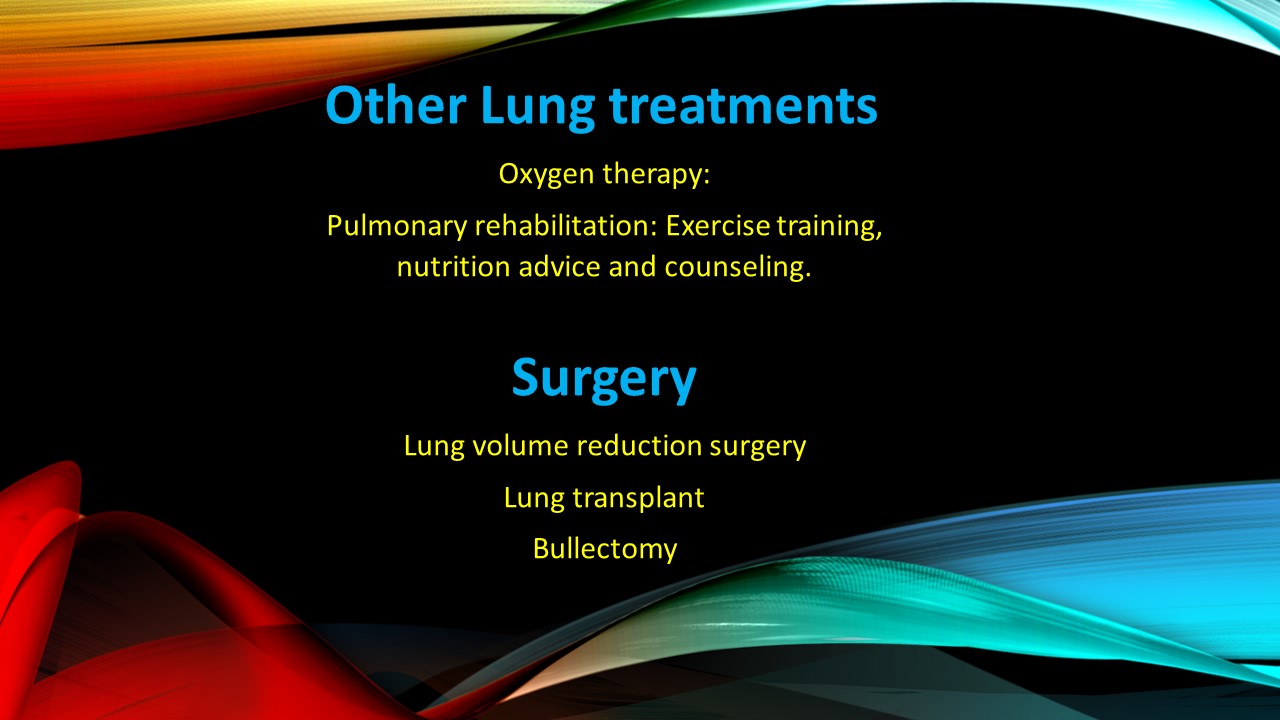Chronic obstructive pulmonary disease (COPD)
Is a chronic inflammatory lung disease that causes Shortness of breath with exertion.
The main cause of COPD in developed countries is tobacco smoking.
Emphysema and chronic bronchitis are main contributor to COPD.
Symptoms
Wheezing
Chest tightness
A chronic cough that may produce sputum
Frequent respiratory infections
Lack of energy
Unintended weight loss
Blueness of the lips or fingernail beds
Swelling in ankles, leg.
Risk factors
Exposure to tobacco smoke and smoking
People with asthma who smoke
Occupational exposure to dusts and chemicals
Genetics. alpha-1-antitrypsin deficiency is the cause of some uncommon cases of COPD.
Complications
Respiratory infections. An annual flu vaccination and regular vaccination against pneumococcal pneumonia can prevent some infections.
Heart failure and heart attack
Lung cancer
pulmonary hypertension
Depression
Diagnosis
Pulmonary function tests including lung volumes, diffusing capacity and pulse oximetry.
Spirometry: Spirometry can detect COPD even before you have symptoms of the disease.
Chest X-ray
CT scan of your lungs
Arterial blood gas analysis
Laboratory tests. genetic disorder alpha-1-antitrypsin (AAt) deficiency ia pt with family history of COPD and COPD under age 45.
Treatment
Smoking cessation
Medications
Bronchodilators
Short-acting bronchodilators: example include albuterol (ProAir HFA, Ventolin HFA)
The long-acting bronchodilators example include tiotropium (Spiriva)
Inhaled steroids: example includes Fluticasone (Flovent HFA, Flonase, Pulmicort)
Combination inhalers: (Advair) and formoterol and budesonide (Symbicort)
Oral steroids for acute exacerbations.
Phosphodiesterase-4 inhibitors: example roflumilast (Daliresp)
Theophylline
Antibiotics: for acute bronchitis, pneumonia, and influenza.
Lung therapies
Oxygen therapy:
Pulmonary rehabilitation: Exercise training, nutrition advice and counseling.
Surgery
Lung volume reduction surgery
Lung transplant
Bullectomy
